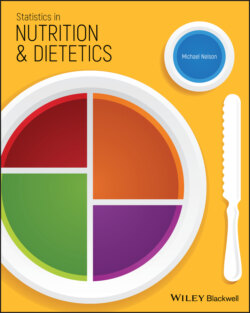Читать книгу Statistics in Nutrition and Dietetics - Michael Nelson - Страница 36
1.6.1 Project Aims
ОглавлениеComing up with an interesting and useful research question will always involve reading the relevant literature (both books and journals) to explore how other people have tackled similar problems, and discussing with colleagues how best to investigate the problem at hand. Once you have done that, you can think about what it is you want to achieve in your research.
Projects have different aims. An undergraduate student project with 15 subjects carried out part‐time over two months may not have much chance of establishing new findings that are statistically significant, but it will introduce the student to hypothesis formulation, designing a study, writing a research protocol, sampling, subject recruitment, data entry, computer analysis, and writing up the results. On the other hand, an MSc project carried out full‐time over four months will require the same skills as the undergraduate project, but will usually involve a more detailed consideration of design, sample size, and study power (see Chapter 12). It will also provide an opportunity to write a detailed report and to make a presentation of the findings (both for assessment), usually to an audience of postgraduate peers and their tutors. More demanding undergraduate projects may include some or all of these additional elements. For a PhD, or for funded research, all of these elements will be present, plus the requirement to write paper(s) for submission to a peer‐reviewed journal and to present findings to a public audience at scientific meetings. As a professor of mine once said, ‘If you haven’t published the paper, you haven’t done the work’.
